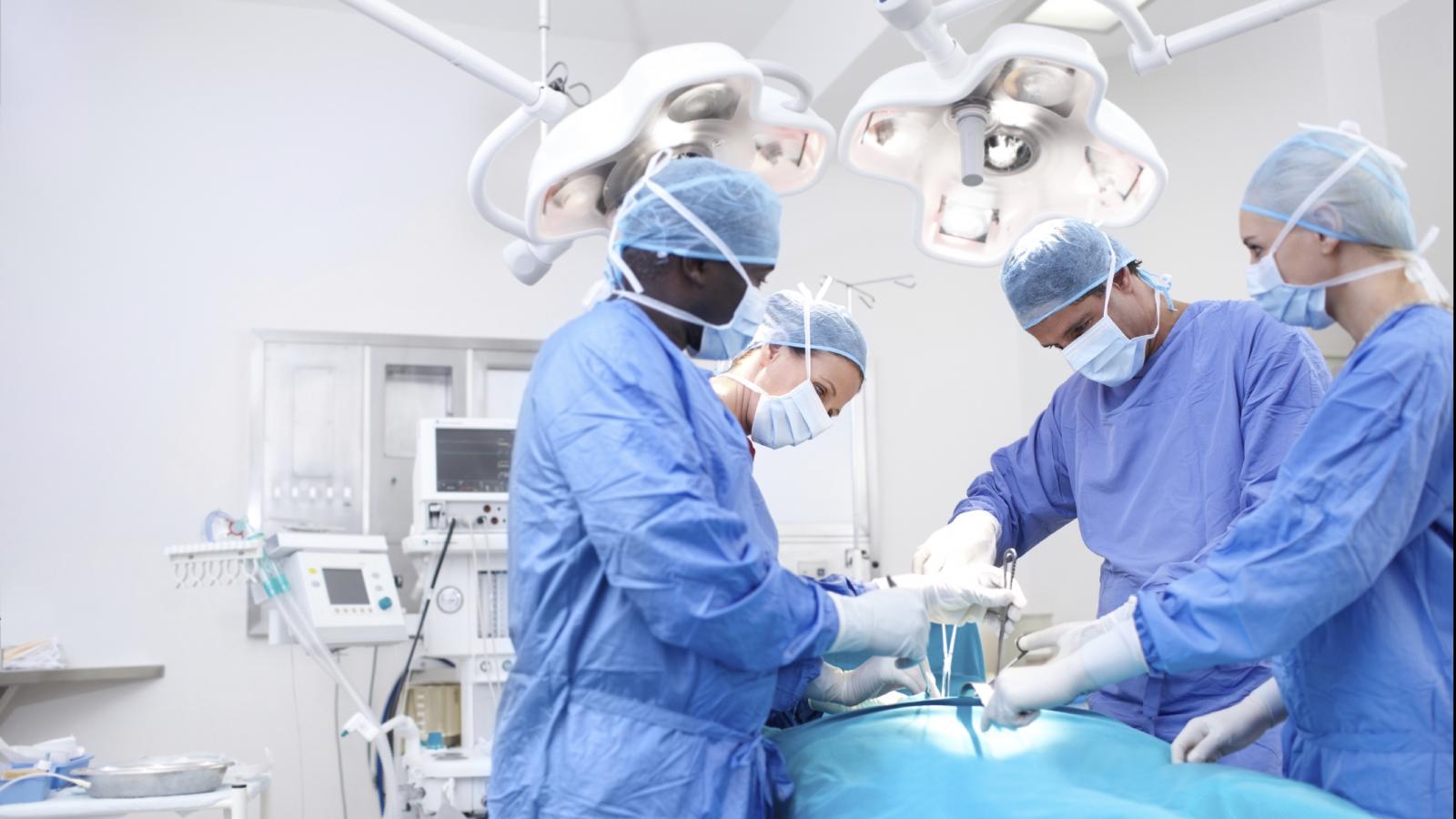Surgery for penile cancer

Surgery for penile cancer
The type of surgery you have depends on the stage, size and position of the cancer. You may have surgery on its own, or it may be combined with other treatments.
Laser surgery
Laser surgery is the most common treatment for carcinoma in situ. This is a procedure that uses a laser beam (a narrow beam of intense light) as a knife to remove cancer cells on the surface of the penis.
Circumcision
Your surgeon will remove part or all of the foreskin of the penis. If the cancer is small and only affecting the foreskin, this may be the only treatment you need.
Glans resurfacing
Glans resurfacing involves removing superficial tissue from the glans or head of the penis. The procedure is used to treat carcinoma in situ (CIS) or low-grade cancer. A small skin graft may be needed to cover the area. The skin is usually taken from your thigh or upper arm.
Wide local excision
Wide local excision is a kind of surgery to remove the cancerous tissue and an area around it and underneath it to reduce the risk of the cancer coming back in the same area. The area of healthy tissue removed will depend on the size of the growth. This surgery is normally done under local anaesthetic.
Mohs surgery (microscopically controlled surgery)
Mohs surgery is sometimes done instead of wide local excision. Using the Mohs technique, the surgeon progressively removes thin layers of affected skin and examines it until only cancer-free tissue remains. The aim is to keep as much healthy skin as possible.
Removal of part or all of the head of the penis (partial glansectomy / glansectomy)
A partial glansectomy is where your surgeon removes the part of the head of the penis that is affected by the cancer. This is suitable for smaller tumours occupying less than half of the head of the penis. The surgeon can then rebuild the part of the head that has been removed, using part of the foreskin or shaft skin or using a skin graft.
A glansectomy is where your surgeon removes the head of your penis and does a skin graft to rebuild a new head for the penis (called a neo-glans). The skin is usually taken from your thigh or upper arm. Your penis will look like you have been circumcised. The procedure does not interfere with the normal functions of your penis – passing urine and having sex. The penis is smaller after the surgery and sensation in the new head of the penis will not be the same as it was before. The amount of tissue removed will depend on how much the cancer has grown into the shaft of the penis.
After this operation, you will have a tube to drain the urine from your bladder (catheter) for about 5 days. This gives the skin graft on your penis a chance to heal. It will take time for the skin graft to heal and achieve a good cosmetic outcome. The donor site (where the skin was removed from) also will need time to heal.
Partial or total penectomy
This is where your surgeon removes part or all of your penis. This is the most common treatment if your cancer has grown deep into the shaft of the penis.
A partial penectomy
This is where the end of the penis is removed but some of the shaft remains. A new glans (neo-glans) can be reconstructed using a skin graft to maintain reasonable function and appearance of the penis.
Total (radical) penectomy
If there is not enough shaft remaining to allow you to urinate (pee) successfully, or if the tumour is extensively involving the shaft of the penis, a total or ‘radical’ penectomy is usually carried out.
This means the entire penis – shaft and root – is removed. An opening is then created in the perineum (the area between the scrotum and anus) to form a special urinary drainage passage called a perineal urethrostomy. After this operation, you will still be able to control urination because the sphincter muscle in the urethra is not affected by the surgery, but you will have to sit down to pee.
Following surgery, you will have a wound dressing and a tube to drain the urine from your bladder (catheter) urinary catheter. You may have the catheter for up to 2 weeks.
Penis reconstruction after a penectomy
Occasionally in cases where a patient has remained cancer free for a number of years after his penectomy surgery, a phalloplasty operation can be performed to create a new penis using skin, muscle and fat from elsewhere in the body – usually from the arm.

It’s very important that you discuss the planned surgery with your doctor and specialist nurse so that you know what to expect after the operation. They may arrange for you to have counselling before or after the operation.
Lymph node surgery
If the cancer has grown deep within the penis, you may need to have some lymph nodes removed in the groin (inguinal lymph nodes) and in the pelvis. The surgeon makes an incision (cut) into your groin to remove the affected lymph nodes.
This is not a simple procedure as there are several significant muscles, nerves, and blood vessels in the groin area, and the nodes often lie deep within the tissues. This procedure may be done at the same time as penile surgery.
If cancer cells are found within a number of inguinal lymph nodes, pelvic lymph nodes may also be removed. Removal of pelvic lymph nodes may be done while the groin nodes are being removed. Or the surgeon may decide to do it as a separate procedure.
Side-effects of lymph node surgery
If a lot of lymph nodes are removed in an area, it can lead to drainage problems and swelling in the legs. This is called lymphoedema. There is a greater risk of lymphoedema (swelling in the tissues) if the pelvic nodes are also removed. Read more about lymphoedema.
Other side-effects of lymph node surgery include infection, problems with wound healing and blood clots.
After surgery for penile cancer
Your recovery will depend on the type of surgery you had. If the cancer is very small and a small surgical procedure was done, your wound is likely to heal quickly. If you had a bigger operation, or if the surgeon removes your lymph nodes, healing and recovery will take longer. Your penis may be swollen after surgery, but this will settle down after a few days. The nurses will give you regular painkillers until any pain or discomfort goes away.
Side-effects
The possible side-effects of penile surgery will depend on the stage of disease and the type of operation that you have. Before surgery, talk with your specialist doctor and nurse about what to expect regarding side-effects.
Your sex life
You will most likely be able to carry on with your normal sex life after laser surgery, circumcision, glans resurfacing, wide local excision, Mohs surgery and glansectomy.
It will not be the same as before. Talk to your surgeon about these issues.
After a partial or total penectomy, however, sexual intercourse will be more difficult – and not possible with a total penectomy. You might need to find different ways of being intimate with your partner. Talk openly with your partner – sharing your feelings might make things easier for both of you.
Make sure to talk to your doctor before the procedure about how the operation will affect your sex life, or talk to a cancer nurse on our Support Line – 1800 200 700. Or visit your local Daffodil Centre to speak to a nurse. They will point you to appropriate services in your area, such as psychosexual counselling.
Will I be able to have children?
With most of the penile procedures, your fertility will not be affected. The best thing to do is to ask your doctor if your fertility is likely to be affected before treatment starts.
If you were thinking about having children or more children, your doctor can talk to you about your options. For example, sperm banking may be possible.
For more information
Phone
1800 200 700


